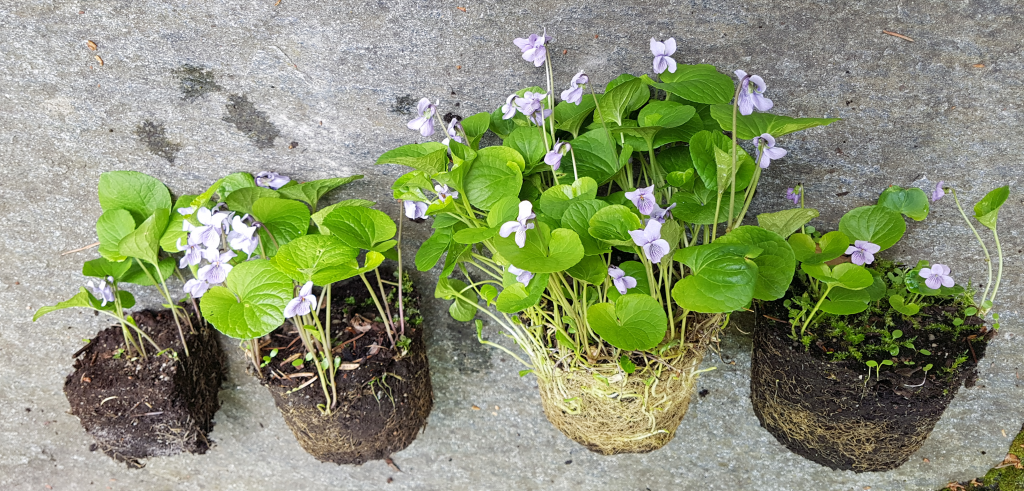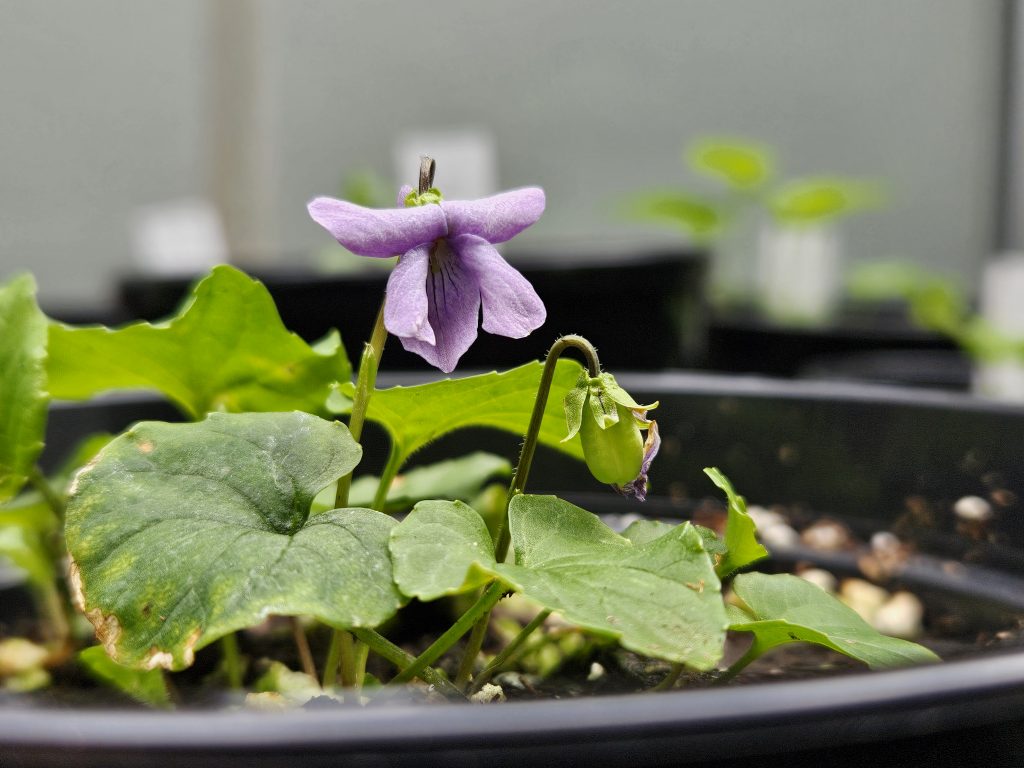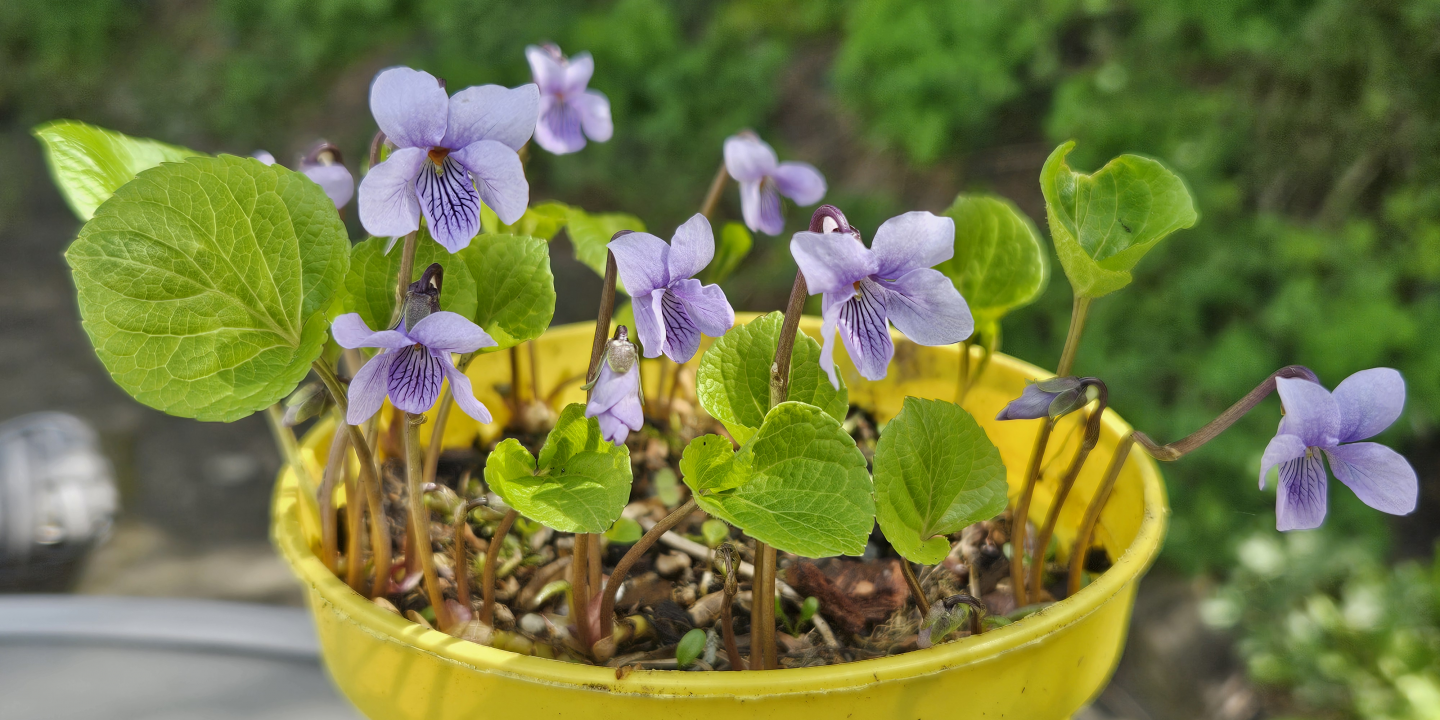
Why is this group interesting to study? The marsh violet group (Viola sect. Plagiostigma, subsect. Stolonosae, in part; Violaceae) is one of numerous north-temperate species groups that diversified in response to climate cooling in the last ~5 million years. Thus, studying this group has the potential to elucidate important evolutionary questions about how lineages diversify in response to climate.
Which species do we have in Norway? Three species occur in Norway and Fennoscandia. Viola palustris is amphi-Atlantic and occurs throughout the area. Viola epipsila occurs throughout western Eurasia and in most of Fennoscadia except for the most Atlantic regions. Viola suecica is subarctic and occurs only in the northernmost parts of Fennoscandia. There are around 10-15 species in Eurasia and North America.

What mechanisms drives their diversification? The diversification of this group has clearly been driven by a cooling climate, which opened new north-temperate niches. In particular, interspecific hybridisation appears to have played a significant role in their diversification, in at least three ways:
- Diversification was largely driven by wole-genome duplication. Viola palustris is a stabilised hybrid species that originated by whole-genome duplication (allopolyploidisation) from hybrids between the European V. epipsila and the North American V. minuscula. This may have happened as late as during the last interglacial period ~100,000 years ago, and demonstrates that the parental species occurred in the same area at the time. That the parental species split as long as ~9 million years ago indicates that this hybridisation might have been a rare, but highly successful chance event. Multiple other species of marsh violets arose by allopolyploidisation in North America around the same time.
- Postglacial recolonisation was aided by adaptive introgression. In northern Fennoscandia, we find signatures of massive gene flow (introgression) from the subarctic Viola suecica into V. epipsila. In particular, V. epipsila appears to have acquired from V. suecica genes that control flowering, allowing it to better cope with the extreme subarctic seasonality. This introgression happened during the colonisation of Fennoscandia after the last glaciation ~10,000 years ago. Throughout their overlapping range in northern Fennoscandia, these two species are ecologically well separated but continue to hybridise and sometimes intergrade.
- Hybridisation can lead to local extinction by demographic swamping. At the southern edge of its distribution, approximately at the level of Poland and Denmark, populations of Viola epipsila have been steadily decreasing over many decades and appear to be replaced by V. epipsila x V. palustris, which is vigourous but completely sterile. This is probably a combined effect of global warming and changes in land use.
These findings have been disseminated in a series of papers over more than a decade. Two more publications are underway, one describing the hybridisation between Viola epipsila and V. suecica based on Marte Sollien’s M.Sc. thesis, and a second paper that aims to clarify the messy taxonomy and nomenclature of the complex. These results are a small contribution to understanding the dynamics of how lineages diversify in response to changing conditions.
Literature:
Marcussen, T., K. S. Jakobsen, J. Danihelka, H. E. Ballard, K. Blaxland, A. K. Brysting and B. Oxelman (2012). “Inferring species networks from gene trees in high-polyploid North American and Hawaiian violets (Viola, Violaceae).” Systematic Biology 61(1): 107–126. https://doi.org/10.1093/sysbio/syr096
Marcussen, T., H. E. Ballard, J. Danihelka, A. R. Flores, M. V. Nicola and J. M. Watson (2022). “A revised phylogenetic classification for Viola (Violaceae).” Plants 11(17): 2224. https://doi.org/10.3390/plants11172224
Sollien, M. B. (2024). Hybridization and introgression in the European marsh violets. M.Sc. Master thesis, University of Oslo. https://www.duo.uio.no/handle/10852/112332?locale-attribute=no
Żabicka, J., G. Migdałek, T. Marcussen, E. Sliwińska, A. Słomka, L. Mackiewicz and E. Kuta (2025). “Genetic diversity and phylogeography of the circumboreal peatland violets (Viola epipsila-V. palustris complex, Violaceae) as inferred from non-coding nuclear and chloroplast DNA regions.” Taxon: in press. https://doi.org/10.1002/tax.13299
![]()
